The New Year 2022 weekend was the first time in a long while I was able to leave Nagasaki Prefecture for vacation purposes - around the first time in about twenty-one months. Sure, I was able to head to Osaka at the start of the 2021 summer break to renew my Australian passport, and my first real vacation outside of Nagasaki City was in Huis Ten Bosch, but it felt really good to just simply relax outside of the prefecture itself.
My friend and guitarist, John, has a massive interest in trains, more so those in Japan, so when my original plans for my Kumamoto trip fell through, I decided to treat it as a sightseeing venture, making use of the Japan Rail (JR) North Kyushu Pass to travel around the prefecture at no extra cost.
The JR Pass, in its most basic form, is a rail pass that allows foreigners to use most of the train services on the JR networks across the country for free for a set amount of days. Buying the JR Pass can be pricey, but if your vacation involves at least two long trips by Shinkansen and other limited express services, you’ll find yourself saving several thousand Yen at the minimum. The only downside is that with the exception of a few specialised regional passes, you have to be a foreign traveller in order to purchase a JR Pass.
With the ongoing pandemic, demand for the JR Pass has become virtually non-existent. As such, certain areas in Japan have decided to temporarily grant permission to foreign residents to purchase localised passes to help promote tourism, Kyushu being one of those regions. I opted for a three-day pass for the North Kyushu area, paying 9500 Yen for it; as such, I ended up saving around 4000 Yen over those three days in rail travel.
On New Year’s Day itself, I decided to take the Aso Limited Express to the namesake municipality, with the intention of taking the Aso-Boy sightseeing train back to Kumamoto City in the evening.
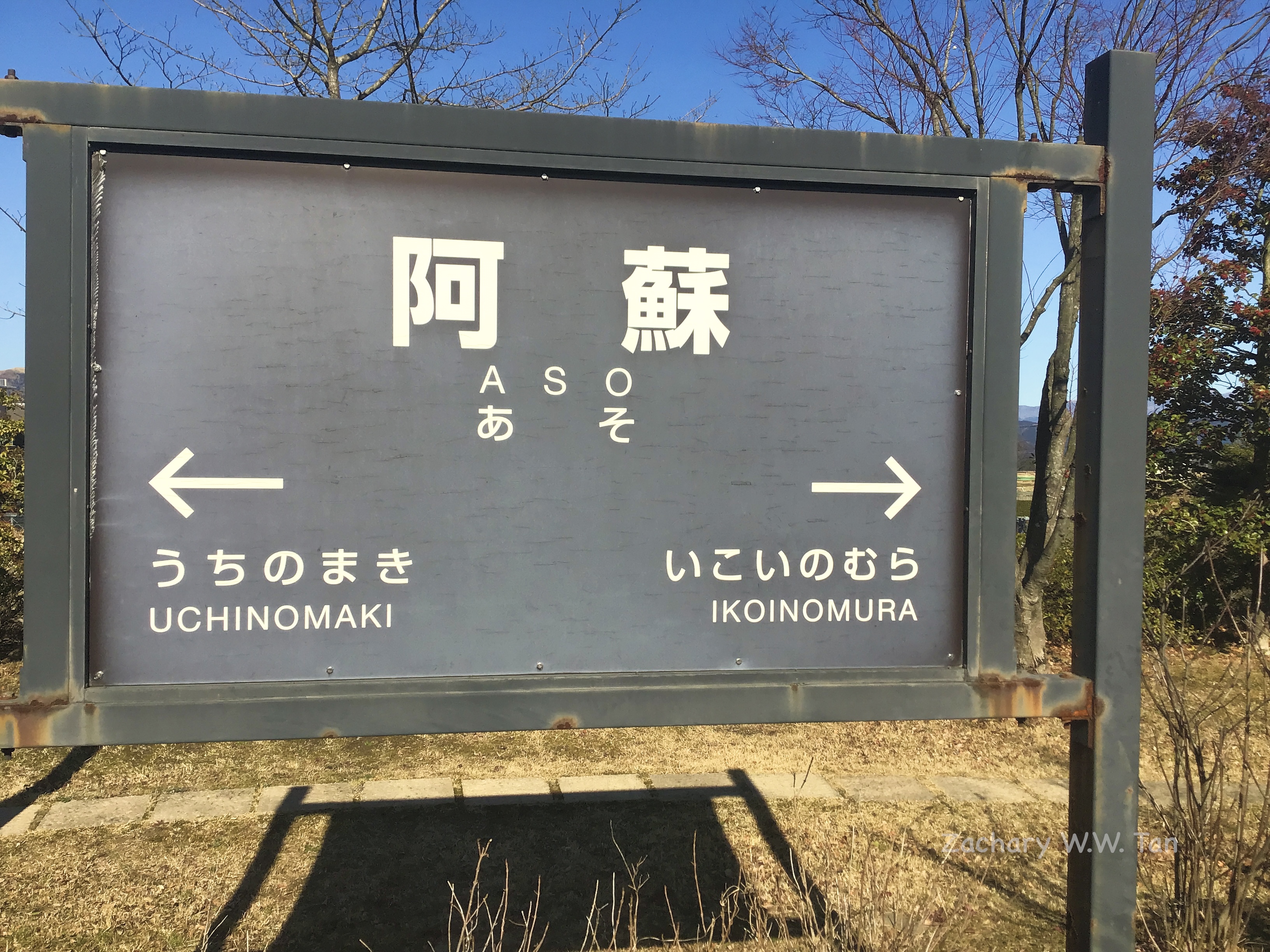
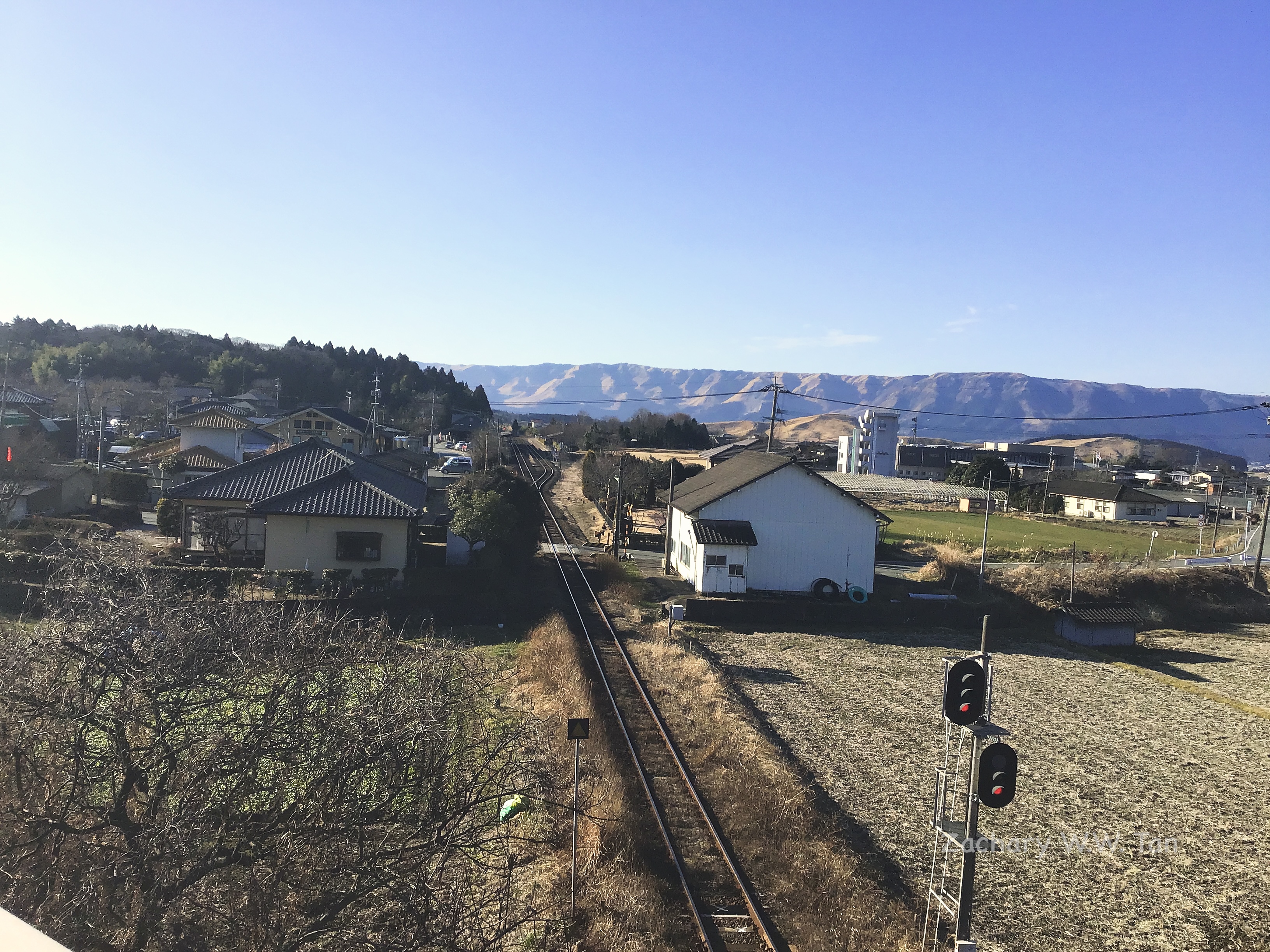
Top: Aso Station signboard. Bottom: overlooking Aso Station from a nearby bridge.
Aso is located in a caldera surrounding the Mount Aso volcano; a caldera is essentially a giant sinkhole formed when a volcano has emptied out its magma chamber, causing the ground to sink on itself. With a curved mountain-like wall in the distance, you might be forgiven for thinking that you’re in a crater on an alien world despite the incorrect terminology.
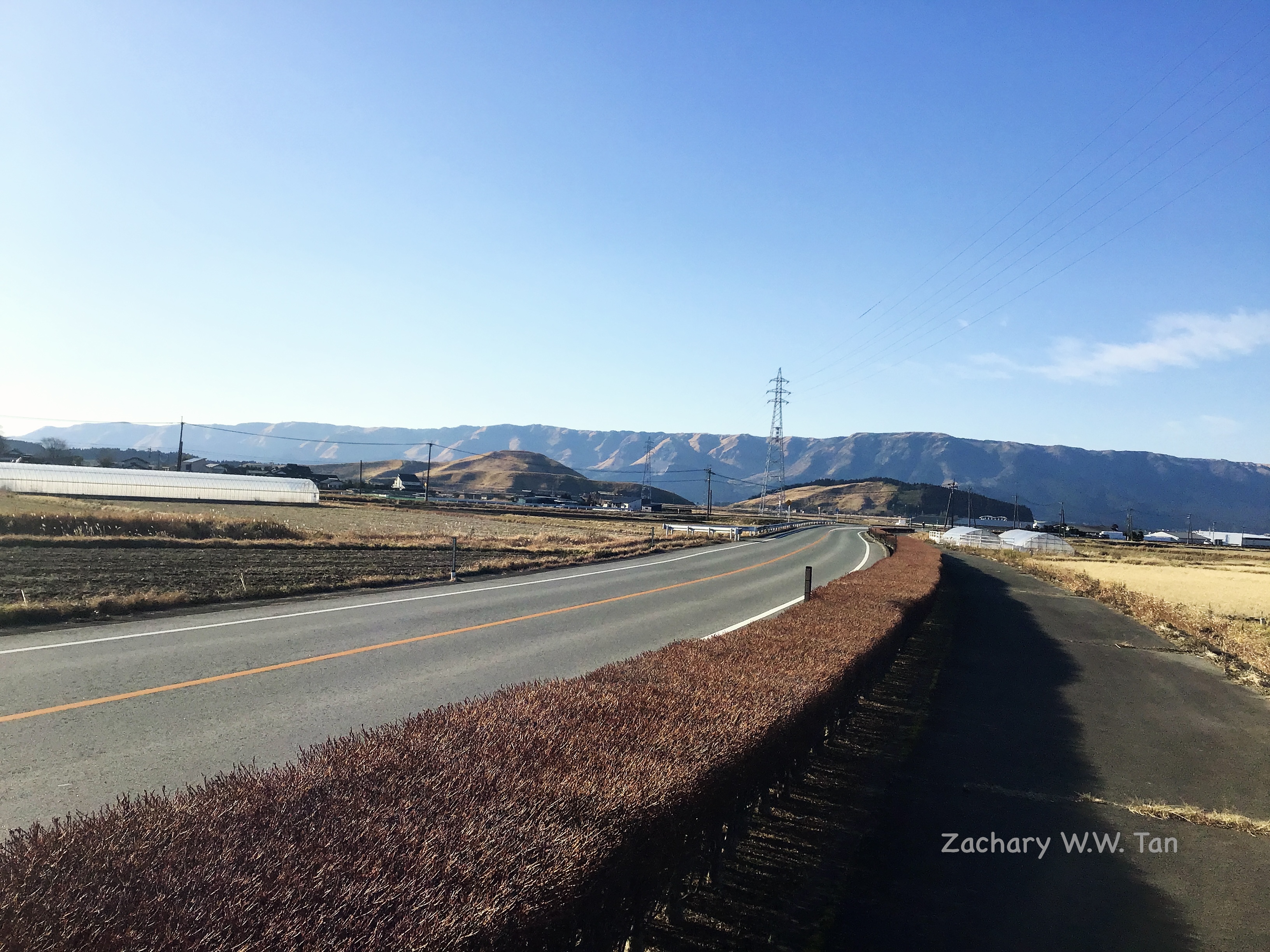
A long walk to nowhere.
Given that it was New Year’s Day, I don’t have a Japanese driver’s licence, and I really wanted to take the Aso-Boy train back to Kumamoto City, I decided not to head towards the volcano. Instead, I chose to go for a walk to really appreciate the beauty of the surrounding area, as you can see in the immediate picture above.
I’ll never forget just how unnaturally beautiful the sky was on that day.
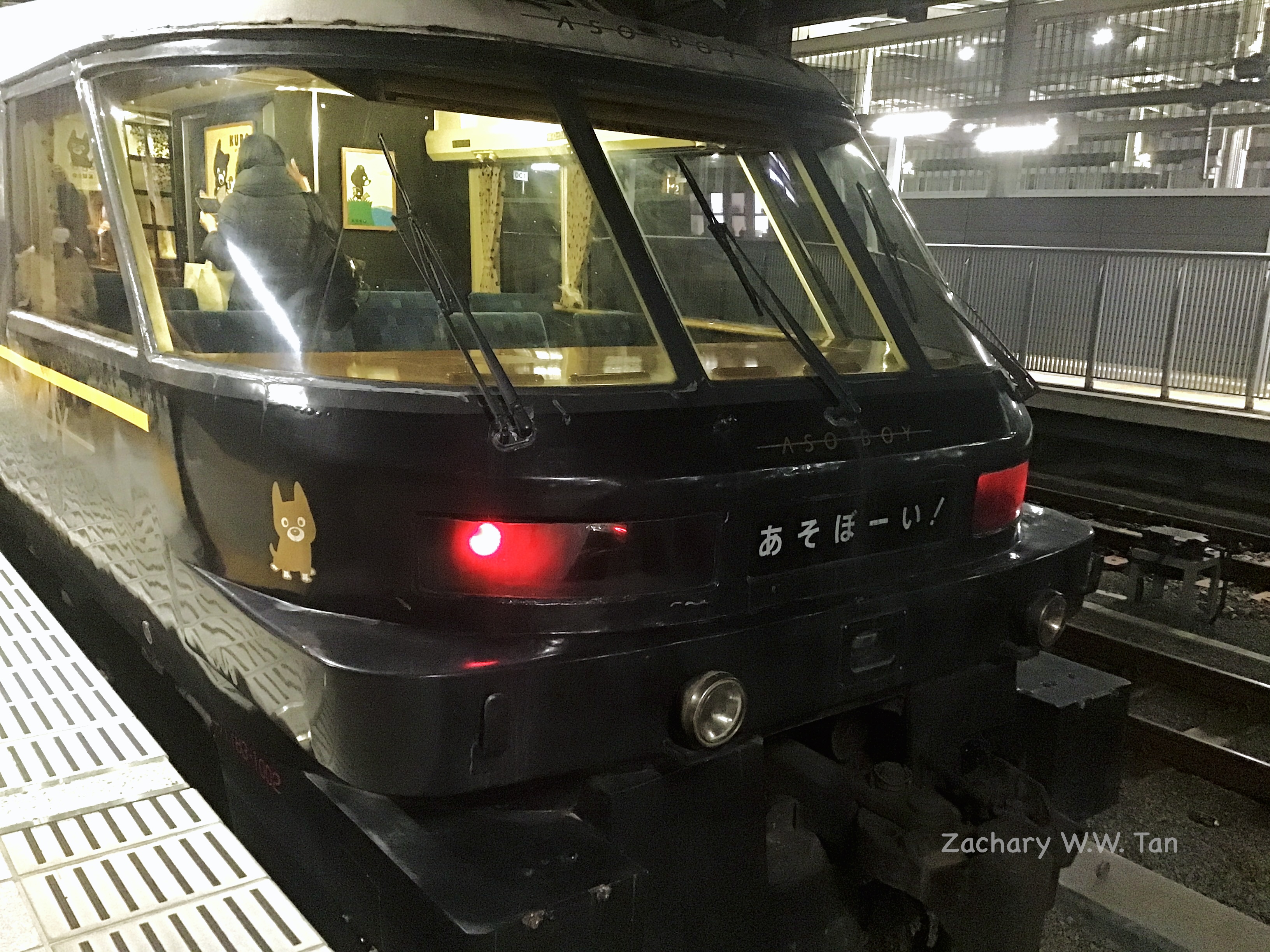
Aso-Boy at Kumamoto Station.
Taking the Aso-Boy train back to Kumamoto City was an experience in itself. I would have liked to take the morning train to Aso, but because it goes all the way to Beppu in Oita Prefecture, it leaves fairly early from Kumamoto City. The return journey in the evening, on the other hand, presented me with a really beautiful dusk sky that I was able to capture on video, which I will add to this post in a future update.
The following morning, I took the second A-Train of the morning to the seaside municipality of Misumi. Once again, I was fortunate to have clear weather on the outbound trip and, as we were trundling along by the seaside, we were treated to a view of Nagasaki Prefecture’s Shimabara region. (Once again, this post will be updated with a video.)
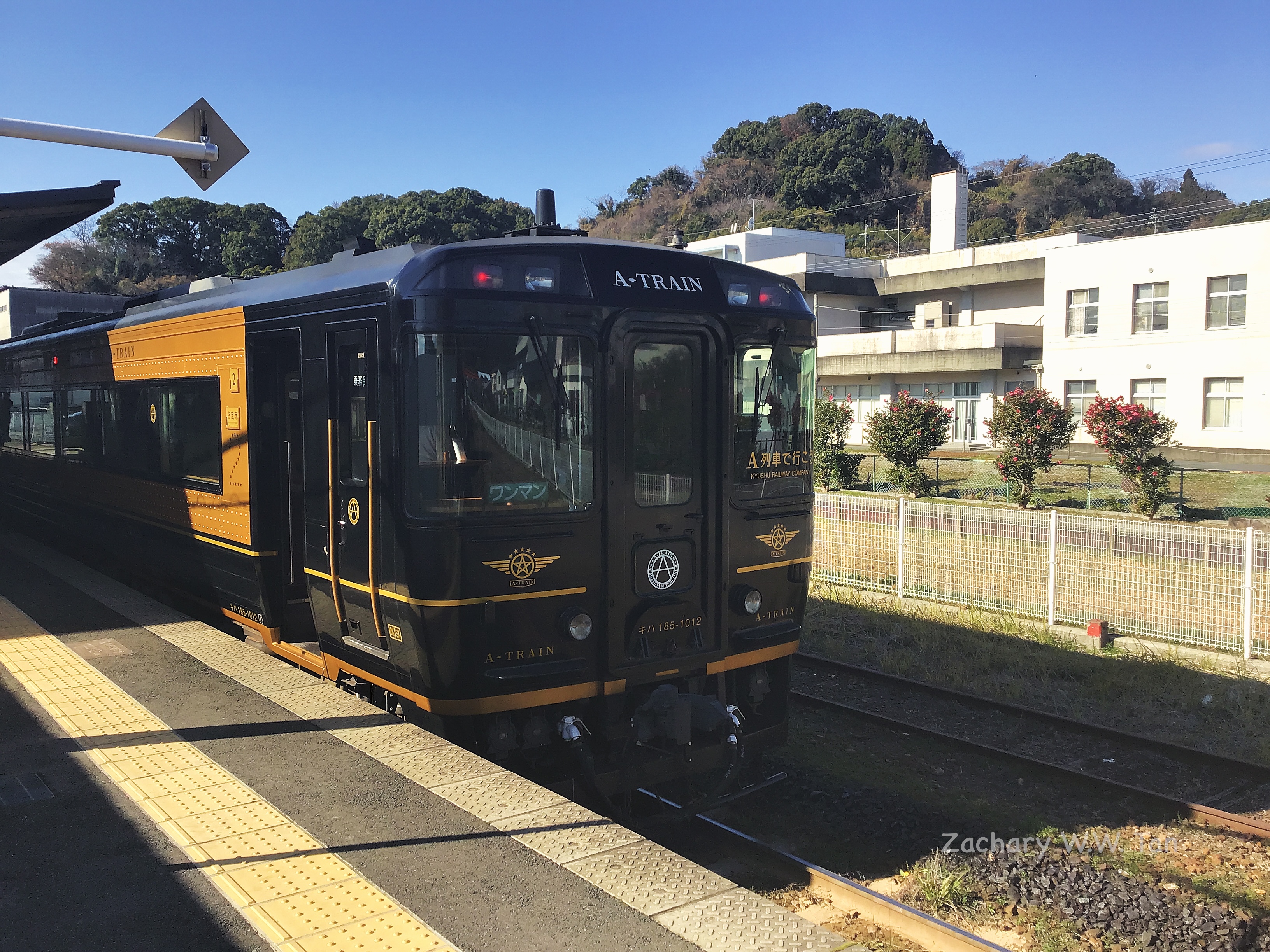
The A-Train at Misumi Station.
Upon leaving Misumi Station, I was greeted by the sight of a conical sightseeing tower overlooking the bay, and was able to get a few good shots of the nearby islands. Unfortunately, while I did take a bus to a seaside village with regional sightseeing buses, the New Year holiday timetable put me off from exploring any further. As such, I resigned myself to hanging around the observation deck overlooking the village before taking the bus back to Misumi Station, where I got a coffee from a makeshift stand while waiting to take the last A-Train back to Kumamoto City.
I do intend on returning to Misumi before moving back home, so hopefully I’ll be able to explore the islands in the area.
Overall, I really needed this trip to mentally recharge. Given that it was over the New Year weekend, perhaps I might have been better off exploring more of Kumamoto City itself, but that would be taking the easy way out. If anything, the day trips that I took helped to open my eyes to just how stunning the rural areas of Japan can be, and rest assured, I will revisit them to take advantage of the regular transportation schedules.